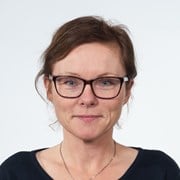Reports
Report: A new Norwegian bioeconomy based on cultivation and processing of seaweeds: Opportunities and R&D needs (2014)
Presentations
Handå, Aquaculture Europe 2014
Skjermo, Aquaculture Europe 2014
Skjermo, Marine Ingredients Conference 2013
Skjermo, Alg'n chem (EABA) 2014
Forbord, Seagriculture 2012
Skjermo, Algae Biomass Novel Food Workshop 2014
Scientific publications
Q.-V. Bach, Sillero, M.V., K.-Q. Tran, Skjermo, J. 2014. Fast hydrothermal liquefaction of a Norwegian macro-alga: Screening tests, Algal Res. (2014), doi.org/10.1016/j.algal.2014.05.009.
Kalogerakis N, Arff J, Banat IM, Broch OJ, Daffonchio D, Edvardsen T, Eguiraun H, Giuliano L, Handå A, Lopez-de-Ipiña K, Marigomez I, Martinez, I, Øie G, Rojo F, Skjermo J, Zanaroli G, Fava F. 2014. The Role of Environmental Biotechnology in Exploiting, Monitoring, Protecting, Preserving and Decontaminating the Marine Environment. New Biotechnology, doi: 10.1016/j.nbt.2014.03.007
Wang X, Andresen K, Handå A, Jensen B, Reitan KI, Olsen Y 2013. Chemical composition of feed, fish and faeces as input to mass balance estimation of biogeneic waste discharge from an Atlantic salmon farm with an evaluation of IMTA feasibility. Aquaculture Environment Interactions 4, 147-162.
Broch OJ, Ellingsen I, Forbord S, Wang X, Volent Z, Alver MO, Handå A, Andresen K, Slagstad D, Reita, KI, Olsen Y, Skjermo J. 2013. Modelling the cultivation and bioremediation potential of the kelp Saccharina latissima in close proximity to an exposed salmon farm in Norway. Aquaculture Environment Interactions 4, 187-206.
Wang X, Broch OJ, Forbord S, Handå A, Reitan KI., Skjermo J, Vadstein O, Olsen Y. Assimilation of inorganic nutrients from salmon (Salmo salar) farming by the macroalgea (Saccharina latissima) in an exposed coastal environment: Implications for integrated multi-trophic aquaculture. Journal of Applied Phycology. 26, 1869-1878 DOI 10.1007/s10811-013-0230-1
Handå A, Forbord S, Wang X, Broch OJ, Dahle SW, Størseth TR, Reitan KI, Olsen Y, Skjermo J. 2013. Seasonal- and depth-dependent growth of cultivated kelp (Saccharina latissima) in close proximity to salmon (Salmo salar) aquaculture in Norway. Aquaculture 414-415, 191-201.
Broch OJ, Slagstad, D. 2012. Modelling seasonal growth and composition of the kelp Saccharina latissima. Journal of Applied Phycology, 24 (4), 759-776; DOI: 10.1007/s10811-011-9696-y
Forbord S, Skjermo J, Arff J, Handå A, Reitan KI, Bjerregaard R, Lüning K. 2012. Development of Saccharina latissima kelp hatcheries with year-round production of zoospores and juvenile sporophytes on culture ropes for kelp aquaculture. Journal of Applied Phycology, 24 (3), 393-399.

